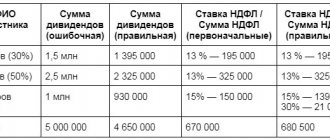Almost when running any business related to material assets, the entrepreneur has a need to use warehouse space and appropriate assistance - unloading and loading, protection against theft, maintaining integrity, maintaining records. You can create the storage yourself or rent it. The second option is preferable and more economical, especially for start-ups or small businesses with low turnover. We'll tell you about the responsible storage of goods in the buyer's warehouse: what kind of service this is, what you need to know to use it.
Peculiarities
Let's consider a standard situation in trade relations. In addition to the fact of transferring the cargo, there is also the moment of ensuring safety. Typically, the owner is responsible for this operation. But in practice, more complex cases often occur, for example, a consumer refused to purchase a shipment that had already been transported to him. And before returning it, he is obliged to provide decent conditions for preservation.
Since in modern business not every enterprise can afford to maintain its own warehouse, and sometimes it is simply cost-effective (for example, when the need for warehouse space arises only occasionally), logistics companies involved in the transportation of goods often take it for temporary maintenance, which includes includes a whole complex of manipulations.
What is it - product storage answer:
- Careful unloading from the vehicle.
- Acceptance and, accordingly, record keeping on the appropriate equipment. The software from Cleverence is excellent for these purposes. On our website you can find an option suitable for your purposes.
- Equipment. In this case, this is done in the following way: an order arrives, and employees according to it pack certain product units.
- Marking. In accordance with the latest changes in the legislation of the Russian Federation, in the coming years the project on the mandatory application of a special barcode on almost all products will end.
- Packing/repacking, bringing the consignment into proper form, in accordance with the regulations, because each cargo has excellent conditions of detention and transportation.
- Loading.
In addition, additional items may be included in the list of services; they are discussed separately. The parties sign an agreement, which is stipulated by Chapter 47 of the Civil Code of the Russian Federation. The logistics company takes full responsibility for ensuring safety. However, from the point of view of lawyers, the signing of such a contract and the term we are considering are excellent procedures.
The concept of responsible storage of products is regulated by Article 524 of the same Civil Code. Let's look at the features below.
Essence of response storage
If the buyer has received the goods, but does not want to pay for it, he preserves its integrity and ensures that the supplier can return his property back. In a domestic situation, a person can return unpaid products, but only if they have intact packaging and are in their original appearance and condition.
Purpose of the operation
The presence of mutual responsibility presupposes the preservation of the interests of both parties to the agreement. Likewise, the one who buys retains the opportunity to refuse to purchase the product, and the one who sells receives a guarantee that it will remain safe during the implementation of this offer. This does not lead to damage to the batch, loss or other negative consequences for the supplier.
Answer Cargo storage is a non-contractual service, that is, there is no contract as such. Accordingly, there is no document regulating compensation for damage or other situations. And if the agreement is signed, then the relationship falls under the purview of Article 47.
Thus, storage for the seller is necessary to guarantee the integrity of items not yet sold, unpaid, but handed over. And the point for the consumer is to provide the opportunity to see the trade item with their own eyes, evaluate it and, if desired, pay.
The goods are accepted by the client
Sometimes circumstances arise in which delivery has been made, but the purchase has not taken place because the buyer refuses. This happens due to the fact that the counterparty could change his mind, the cargo turned out to be of inadequate quality, some clauses of the contract were violated, and so on. Then the receiving party is automatically subject to obligations for the responsible storage of this unsold product for the period from the moment the supplier is notified of the refusal until he takes measures to take the shipment back.
If the seller for some reason does not want to return his property or transfer the rights to this action within a certain period, then the failed buyer can either sell the trading units at his disposal or independently carry out transportation (return). Upon sale, he is obliged to return the monetary equivalent of the cargo, which is specified in the contract, and everything that ends up on top can be kept for himself and considered profit.
Here are two reasons why responsibility for storing goods in a warehouse is imposed:
- The receiving party refused to pay for the shipment, based on legal grounds (violation of legal norms or agreements).
- Payment has not yet been made, for example, the transaction takes several days to complete. It is prohibited to perform any actions or sell trade items until the money has been fully transferred.
What can the supplier do if the products were taken by the consumer for safekeeping:
- Pick up, that is, organize and pay for transportation.
- Transfer rights to a third party.
- Redirect to another person.
- Allow disposal.
Regardless of the chosen solution, you must pay all costs.
The goods are accepted by the seller
The opposite situation is possible when the receiving party is engaged in transportation. If the buyer has already paid the money, but is temporarily unable to pick up the shipment, then during this period it is in safekeeping until it is shipped from the warehouse. As a rule, in this case, problems do not arise, since the manufacturer usually has warehouse facilities and specialized equipment to record all product units in circulation.
Custody as a legal term
IMPORTANT! A sample act of acceptance of goods for safekeeping from ConsultantPlus is available here
The situation called “ acceptance of goods for safekeeping ” is regulated by a completely different article of the Civil Code of the Russian Federation, namely Art. 514 “Responsible storage of goods not accepted by the buyer.”
The essence of this operation is to ensure the buyer’s safety of the unpaid goods and the ability of the supplier to return it to their disposal.
The purpose of safekeeping is to protect the interests of the parties to the supply contract: the buyer has the right to refuse the goods, but the exercise of this right should not infringe on the interests of the supplier and lead to damage or loss of the product.
Safekeeping is a non-contractual concept, which means it is carried out free of charge (this does not include possible reimbursement of expenses). From a legal point of view, it is impossible to conclude a “safe storage” agreement; a document named so will be an ordinary storage agreement within the framework of Art. 47 Civil Code of the Russian Federation.
What are the consequences of the buyer (recipient) failing to ensure the safety of the delivered goods ?
The goods are accepted for storage by the buyer
The name accurately reflects the essence of possible and very common circumstances in trade practice, when the supplier has delivered the goods, and the buyer refuses it due to any legislative acts or other legal norms. The buyer intends to return the goods, but until the notified supplier picks it up, it is considered “taken into custody.” If within a certain period the supplier does not take back his goods or does not dispose of them, the buyer has the right to sell these goods or return them to the supplier himself. If the stored goods were sold by the buyer, he must give the supplier the proceeds for it in the amount indicated in the documentation (the cost of the goods according to the documents), keeping for himself what he managed to earn from above.
Reasons why a buyer can accept goods for safekeeping:
- goods have been received for which the receiving organization legally refused to pay;
- According to the contract, it is forbidden to consume goods before payment, which has not yet been received.
How can the supplier dispose of the goods in safekeeping, other than to take away:
- instruct to transfer for storage (under agreement) to a third party;
- instruct to redirect or transfer to a third party;
- allow disposal.
IMPORTANT! All these actions are carried out exclusively at the expense of the supplier.
The supplier accepts it for safekeeping
Another possible situation of responsible storage is when the parties “switch roles” and the “custodian” of the goods is its supplier. It happens that the goods are purchased and paid for, but the buyer is not able to take it out immediately. Temporary storage of such cargo is also called “responsible storage” and can be formalized by an appropriate agreement under Art. 47 of the Civil Code of the Russian Federation “Storage of goods”.
Who is comfortable using the service?
In addition to the above situations, you can sign a storage agreement with a third-party organization. Most often this opportunity is used:
- Logistics companies. They can effectively carry out freight transportation, store, manage traffic flows, but at the same time minimize the participation of their own premises and personnel.
- Companies that need to store property exclusively during certain seasons, and not year-round. Instead of maintaining their own warehouse, they can pay for services seasonally.
- In the absence of storage facilities. Sometimes you can completely refuse to purchase and service them by using the offer of third-party companies. This removes some of the responsibility and simplifies the work.
- When consolidating or packaging cargo. Companies offering return storage also carry out shipment, delivery of consignments, their assembly and disassembly.
- If there is a need for additional space for storing property.
In all of the above cases, it is recommended to use the services of specialized companies offering warehouses for storing your property.
Ready-made solutions for all areas
Stores
Mobility, accuracy and speed of counting goods on the sales floor and in the warehouse will allow you not to lose days of sales during inventory and when receiving goods.
To learn more
Warehouses
Speed up your warehouse employees' work with mobile automation. Eliminate errors in receiving, shipping, inventory and movement of goods forever.
To learn more
Marking
Mandatory labeling of goods is an opportunity for each organization to 100% exclude the acceptance of counterfeit goods into its warehouse and track the supply chain from the manufacturer.
To learn more
E-commerce
Speed, accuracy of acceptance and shipment of goods in the warehouse is the cornerstone in the E-commerce business. Start using modern, more efficient mobile tools.
To learn more
Institutions
Increase the accuracy of accounting for the organization’s property, the level of control over the safety and movement of each item. Mobile accounting will reduce the likelihood of theft and natural losses.
To learn more
Production
Increase the efficiency of your manufacturing enterprise by introducing mobile automation for inventory accounting.
To learn more
RFID
The first ready-made solution in Russia for tracking goods using RFID tags at each stage of the supply chain.
To learn more
EGAIS
Eliminate errors in comparing and reading excise duty stamps for alcoholic beverages using mobile accounting tools.
To learn more
Certification for partners
Obtaining certified Cleverence partner status will allow your company to reach a new level of problem solving at your clients’ enterprises.
To learn more
Inventory
Use modern mobile tools to carry out product inventory. Increase the speed and accuracy of your business process.
To learn more
Mobile automation
Use modern mobile tools to account for goods and fixed assets in your enterprise. Completely abandon accounting “on paper”.
Learn more Show all automation solutions
Issue from safekeeping
Let’s imagine that after some time the Supplier LLC takes 4 pieces of goods from safekeeping. 4-door cabinet.
Based on our document Purchase of goods and services, we create a document Return of goods to the supplier.
We indicate the quantity in the tabular part 4 pcs and submit the document. Everything else is automatically filled in from the goods receipt document. As a result, we returned the goods to the supplier.
Now, for example, we need to see how much product is left in the warehouse. Open the Purchasing section -> Purchasing reports -> Remaining goods accepted for commission.
In the report, indicate the desired date and organization and click Generate.
We see that the balance is 6 pieces, since they accepted 10 pieces and returned 4 pieces.
As a result, we used a commission document flow scheme to accept goods for storage. The same option is possible when we transfer the goods to a commission agent for storage.
Stages of the procedure
An integrated approach involves the following actions:
- Unloading manually or using electric forklifts. Everything is done with care, since the integrity of the cargo is completely dependent on the receiving party.
- Acceptance. It consists of reconciling the actual quantity with the nomenclature and monitoring packaging and other characteristics.
- Placing and cataloging. Depending on the type of product, it can be placed in different ways on shelves and in containers. Information about the location in the warehouse must be entered into the file cabinet.
At this point, the service has not yet been fully provided; the transfer also needs to be completed. What does it mean to release inventory items from safekeeping:
- Drawing up an application from the owner, checking it.
- Equipment. If required during this stage, labeling, packaging and additional packaging activities are carried out.
- Preparing the batch for shipment - applying barcodes, preparing accompanying documentation.
- Loading. Transport, as a rule, is customized by the client himself. However, often this offer comes from logistics companies, so shipment smoothly flows into transportation.
If we consider not an agreement, but an obligation that arises between two parties to trade relations under Article 524 of the Civil Code of the Russian Federation, then there are somewhat fewer stages; they are, as a rule, limited to acceptance and unloading, placement, and then loading without additional manipulations with the cargo.
Why do you need an act of transfer for safekeeping?
Before putting the property into storage, a corresponding agreement is concluded between the parties. In essence, the act is documentary evidence that all the terms of this agreement have been met. That is why this document is drawn up directly upon transfer of property. Typically, all necessary information is entered into the document by the receiving party. Although it is worth noting that there is no fundamental difference here. Therefore, any of the participants can fill out the document, because the parties will re-read it before signing autographs.
After both parties sign the document, responsibility for safety falls on the receiving party. If injuries and damage are caused, the company that currently stored the property is obligated to compensate. Naturally, the act confirming the fact of the transfer will become the main document in legal proceedings. Here it is clear that the receiving party voluntarily assumes obligations and is ready to bear financial responsibility. Accordingly, the court will oblige this company to pay for the damage caused.
When the storage period ends, material assets are returned in full. This fact must also be documented. Here a corresponding act is drawn up, in which the owner of the property confirms that he received it completely intact.
How to draw up an act correctly
In order to correctly draw up an act that will have legal force, you must adhere to certain rules:
- Today, most of the unified forms have been cancelled. But this often causes confusion. Not everyone knows how to correctly draw up such a document. If this is done in free form, gross errors are often made, due to which the document is declared invalid. That is why it is customary to draw up an act in the MX-1 form, which used to be mandatory. This form greatly simplifies the preparation of the document, since the structure is already indicated here. All that remains is to enter the necessary information in the appropriate fields.
- Depending on the circumstances, it may be necessary to provide some additional information. Since this form is not mandatory, you can exclude or additionally add the necessary items, changing the structure and content of the act.
- If, after all, a free style was chosen, you must fill out the document as carefully as possible. Here you can use a sheet of A4 or A5 paper. The company can also develop a special form for this, which is approved by internal rules.
- Typically, information is entered on a computer. After the document is printed, “live” autographs are affixed to it. You can also fill out the form by hand. But in this case, care must be taken to ensure that the handwriting is legible. You can enter information using printed characters.
- The document is drawn up in two copies, one for each party. This is done so that both organizations have documentary evidence of the transaction. The act may be needed if the parties have any claims against each other, and the matter comes to trial. If necessary, the number of copies can be increased. At the same time, they must be certified by the appropriate signatures.
- Only after the act is completed, each organization enters information about it into the accounting journal.
( Video : “Receipt of goods for safekeeping”)
Benefits of what warehousing means
We consider the specifics of the arrangement before simply renting a storage facility. When a document with full legal force for service is signed, the custodian assumes full financial responsibility for damage, theft of goods or other damage. This is the main advantage, but there are additional benefits:
- Flexible pricing. You do not need to pay a fixed price tag, just pay for the square meters used.
- Ease of working with the warehouse. The user is relieved of many obligations; there is no need to provide security, interact with services, clean, etc.
- High quality premises and appropriate conditions. Since the custodian bears financial responsibility, he is directly interested in the safety of the product, therefore he ensures suitable humidity, air temperature, fire safety, and cleanliness.
And in the case of obligations on both sides, the benefits go beyond the goals of this operation. That is, the advantages:
- The client can pay for the goods only after receiving and inspecting them.
- Guarantee of the integrity of the lot even if you refuse to purchase it.
This is a respectful relationship between buyer and seller, consistency, which must be fully ensured both from the point of view of legislation and from the side of each of the participants.
What responsibilities does the custodian have?
Paragraph 1 of Article 901 of the Civil Code provides for the liability of the custodian for loss, shortage or damage to things accepted for storage on the grounds provided for in Article 401 of the Civil Code.
In the appendices (for example, an act of acceptance and transfer of design elements, invoice, defect sheet, warehouse receipt, etc.) to an agreement for the provision of warehouse services, as a rule, indicate the transfer of goods and materials in quantitative terms, with a detailed description of its qualitative characteristics (color , condition, weight, etc.). That is, to reflect the fact of transfer, the cost of inventory items at which they are accounted for by the transferring party does not matter.
note
The cost of inventory items is important for insurance and settlement of the amount of losses that the custodian may cause by non-fulfillment or improper fulfillment of obligations.
Responsibilities of the custodian of inventory items
Everything that the receiving person must do is approved by the law of the Russian Federation. Liabilities:
- It is necessary to conclude a written contract by hand if the value of the stored valuables exceeds 10 minimum wages. Otherwise, a verbal agreement is sufficient.
- You must place the goods at your own discretion, but in accordance with their characteristics and storage requirements from the manufacturer.
- When the deadline expires or the client submits a corresponding request, the custodian is obliged to release the cargo.
- Documentation on the movement of inventory items should be filled out and kept safe.
To ensure these conditions, it is necessary:
- Have appropriately sized storage areas.
- Create conditions - air temperature and humidity, ventilation, protection from fire, parasites, etc.
- Purchase equipment - warehouse equipment for lifting heavy objects, shelving, computers for accounting.
- Install the software.
- Recruit responsible maintenance personnel.
The procedure for documenting the transfer of NFA for storage
This operation and the procedure for its documentation are not reflected in the accounting instructions of state (municipal) institutions - nor in the Instructions for the use of the Unified Chart of Accounts, approved. by order of the Ministry of Finance of Russia dated December 1, 2010 No. 157n (hereinafter referred to as Instruction No. 157n), nor in the Instructions for the application of the Chart of Accounts for Budget Accounting, approved. by order of the Ministry of Finance of Russia dated December 6, 2010 No. 162n (hereinafter referred to as Instruction No. 162n). Storage is the subject of Chapter 47 “Storage” of the Civil Code of the Russian Federation.
According to Articles 886, 900, 901 of the Civil Code of the Russian Federation, under a storage agreement, one party (custodian) undertakes to store the thing transferred to it by the other party (bailor) and return this thing safely. A storage agreement in which the custodian is a commercial organization or a non-profit organization that carries out storage as one of the purposes of its professional activities (professional custodian) may provide for the custodian’s obligation to accept the item for storage from the bailor within the period specified in the agreement.
A storage agreement, which provides for the obligation of the custodian to accept an item for storage, must be concluded in writing, regardless of the composition of the parties to this agreement and the value of the item transferred for storage.
If the storage period is not provided for by the contract and cannot be determined based on its terms, the custodian is obliged to store the thing until demand by the bailor. In turn, the latter has the right to pick up his item at any time and without any restrictions, even if the storage period provided for by the contract has not yet expired (Article 904 of the Civil Code of the Russian Federation).
In addition, the custodian is obliged to take all measures provided for by the contract, the properties of the transferred item, and legislative standards (sanitary, fire safety, etc.) to ensure its safety (Article 891 of the Civil Code of the Russian Federation). Without the consent of the depositor, the custodian does not have the right to use the transferred item and transfer it for storage to a third party, with the exception of certain cases (Articles 892, 895 of the Civil Code of the Russian Federation).
At the end of the period, the custodian is obliged to return the same thing that was transferred for storage, unless the contract provides for storage with depersonalization, in the condition in which it was accepted for storage, taking into account its natural deterioration, natural loss or other change due to its natural properties (Article 900 of the Civil Code of the Russian Federation). Accordingly, the bailor is obliged to take the thing back (Article 899 of the Civil Code of the Russian Federation). The custodian is responsible for the loss, shortage or damage of things accepted for storage on the grounds provided for in Article 401 of the Civil Code of the Russian Federation.
From the above norms it follows that when transferring inventory items for storage, ownership does not pass to the custodian, unless otherwise provided by the storage agreement.
Resolution of the State Statistics Committee of Russia dated 08/09/1999 No. 66 approved unified forms of acts on the acceptance and transfer of inventory items for storage (form No. MX-1, according to OKUD 0335001) and on the return of inventory items deposited for storage (form No. MX- 3, according to OKUD 0335001).
Form No. MX-1 is used to record the acceptance and transfer of inventory items transferred from depositors (organizations, individual entrepreneurs) for storage to the custodian organization. The document is used both for domestic storage and for storage carried out with the participation of professional custodians. Drawed up in the required number of copies by representatives of the custodian and depositor organizations on the basis and in accordance with the storage agreement (for a certain period and “on demand”).
Form No. MX-3 is used to record the return to the depositor of inventory items accepted by the custodian organization for storage. Drawed up in two copies by the financially responsible person of the custodian organization after the expiration of the storage period for inventory items when they are returned to the depositor. One copy remains with the custodian organization, the second is transferred to the bailor.
According to Article 912 of the Civil Code of the Russian Federation, a commodity warehouse issues one of the following warehouse documents as confirmation of acceptance of goods for storage:
- double warehouse receipt;
- simple warehouse receipt;
- warehouse receipt.
Also, as confirmation of acceptance of goods for storage, another document may be provided (see order of the Federal Customs Service dated September 13, 2006 No. 870 “On the procedure for prompt registration of goods and vehicles converted into federal property, and transactions for the circulation of this property in the Customs authorities Russian Federation").
When it is not necessary to accept for storage
Moving to the sphere of obligations between the seller and the buyer, let's consider a situation in which the consumer can refuse to answer for storage under the law:
- Gross discrepancy between the batch assortment and the contract.
- Discrepancies in quantity, while the supplier is at the conclusion of the transaction and is ready to immediately collect the unpaid surplus.
- If the goods not only do not comply with the conditions specified in the contract, but also require special handling during storage, for example, these are medicines or perishable products. If the cost of transportation turns out to be lower than the cost of meeting special requirements, then you should immediately return it.
Ready-made solutions for all areas
Stores
Mobility, accuracy and speed of counting goods on the sales floor and in the warehouse will allow you not to lose days of sales during inventory and when receiving goods.
To learn more
Warehouses
Speed up your warehouse employees' work with mobile automation. Eliminate errors in receiving, shipping, inventory and movement of goods forever.
To learn more
Marking
Mandatory labeling of goods is an opportunity for each organization to 100% exclude the acceptance of counterfeit goods into its warehouse and track the supply chain from the manufacturer.
To learn more
E-commerce
Speed, accuracy of acceptance and shipment of goods in the warehouse is the cornerstone in the E-commerce business. Start using modern, more efficient mobile tools.
To learn more
Institutions
Increase the accuracy of accounting for the organization’s property, the level of control over the safety and movement of each item. Mobile accounting will reduce the likelihood of theft and natural losses.
To learn more
Production
Increase the efficiency of your manufacturing enterprise by introducing mobile automation for inventory accounting.
To learn more
RFID
The first ready-made solution in Russia for tracking goods using RFID tags at each stage of the supply chain.
To learn more
EGAIS
Eliminate errors in comparing and reading excise duty stamps for alcoholic beverages using mobile accounting tools.
To learn more
Certification for partners
Obtaining certified Cleverence partner status will allow your company to reach a new level of problem solving at your clients’ enterprises.
To learn more
Inventory
Use modern mobile tools to carry out product inventory. Increase the speed and accuracy of your business process.
To learn more
Mobile automation
Use modern mobile tools to account for goods and fixed assets in your enterprise. Completely abandon accounting “on paper”.
Learn more Show all automation solutions
Accounting entries
Off-balance sheet account 002 is used. All requirements and rules are regulated by Order of the Ministry of Finance No. 94.
Buyer's accounting
The storekeeper enters valuables into a category separate from the main accounting department of the enterprise. Here is an example of documentary recording (postings):
| Dt | CT | Operation | Amount, rub. | Document |
| 002 | Acceptance of goods | 406000 | Certificate of transfer in form MX-1 | |
| 62 | 90,1 | Payment for services | 37040 | Storage agreement |
| 90,3 | 68,02 | VAT | 5650 | |
| 51 | 62 | Payment | 37040 | Account owner's order (payment) |
| 002 | Return of goods and materials to the owner | 406000 | Certificate of sample MX-3 and recipient’s signature on form MX-2 |
What is included in the concept of “responsible storage”
As such, the term “responsible storage” does not exist in the law. In legal terms, this is called “warehousing.” Although there is no fundamental difference here. Both concepts indicate that one company transferred its property to another company for a certain period of time. As a rule, these are various material assets. Naturally, the receiving party bears full financial responsibility for the property received.
As a rule, the receiving party also receives a certain fee. Warehouses, garages, hangars and other premises are usually used for storage. Many people often wonder what property is allowed to be transferred for storage? You need to know that the transfer of goods and materials for storage is considered by law as a professional activity. This means there are no strict restrictions here. Naturally, it is the parties to the transaction who determine exactly what to transfer and receive for storage. This can be equipment, transport, machinery and any other material assets that can be stored for a long time.
( Video : “Responsible storage in 1C:ERP”)
Form of the act
The act is a document that describes all the details of the transaction. Of course, it can be drawn up between private individuals. However, quite often it is organizations that resort to its design. To confirm the fact that the receiving party assumes responsibility for the property, this document is drawn up. To draw up an act of transfer for safekeeping, form mx-1 is used. A document containing the signatures of representatives of both parties will be considered correctly completed. There should also be detailed information about the property being transferred.









